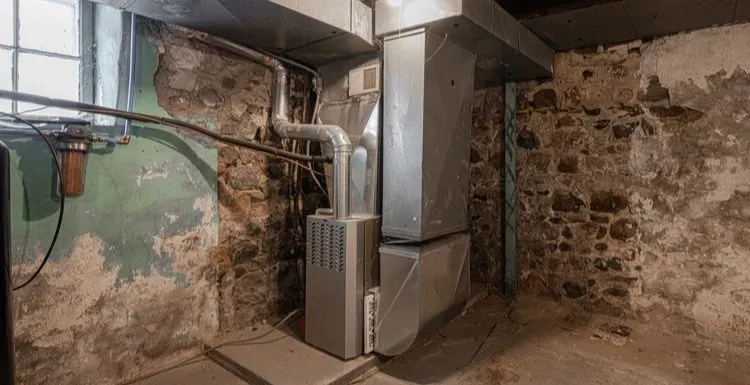In a nutshell, a furnace is a part of the heating, ventilation, and air conditioning (HVAC) system. You activate the furnace when you set the temperature in a room by using a thermostat.
When you adjust the temperature, the air inside the room might be cooler than the temperature you set on the thermostat. When this happens, you trigger the furnace to:
- Turn on
- Start a fan
- Heat the air (which happens in different ways with different types of furnaces)
- Move heated air throughout the space.
This cycle is repeated once the air returns to a temperature under the one set on the thermostat.
Furnace Explained
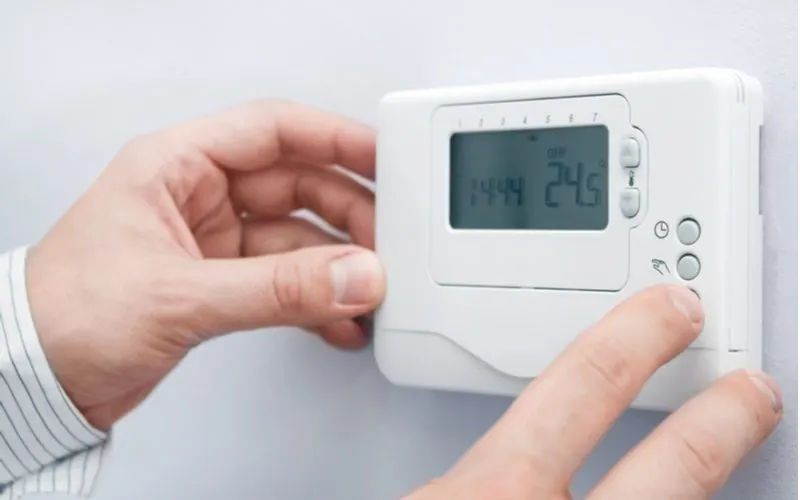
Daniel Krason/Shutterstock
A furnace does much more than warm the air by turning on a fan. It uses intricate processes to ensure that the air is warmed up to the correct temperature by the time it leaves the unit.
Within a house, a furnace heats the air and delivers it to the different rooms. It follows the same generic process as any other furnace to keep the air in your home warm. You’ll notice that the most common type of furnace used in a house is a natural gas furnace.
A furnace is also part of the HVAC system, but a furnace does not take part in cooling air unless you add more pieces to the unit.
Not all furnaces can connect to an AC unit. A furnace must first work through ducts before you can add air conditioning capabilities to it.
However, you’ll end up needing to connect the furnace to an AC unit or condenser anyway, so there is no way that you can use a furnace on its own for air conditioning.
Different types of furnaces use the same generic process but with unique specifics. To understand this, you must first understand what the different types of furnaces are.
Furnace Vs. Heater
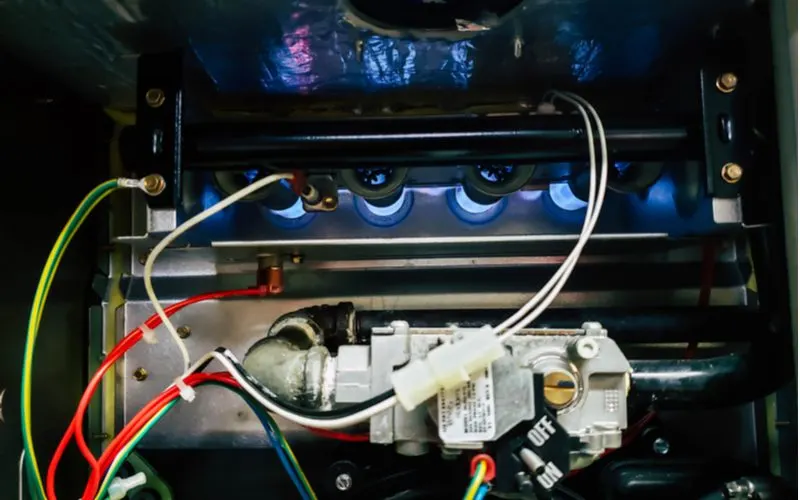
Mike Fig Photo/Shutterstock
A furnace and a heater are not the same thing. Both systems solve the same problem and function based on thermodynamics, but furnaces and heaters are two entirely different systems.
A heater is an umbrella term for anything that heats another object. Heaters range from fire, heaters used within a contained space, and other surprisingly random things. A heater does not heat the air. It recirculates it.
Without a furnace to take in the cool air, warm it, and distribute it, the heater would only put out room-temperature air. One way a furnace can distribute warm air is through a heater.
Types of Furnaces
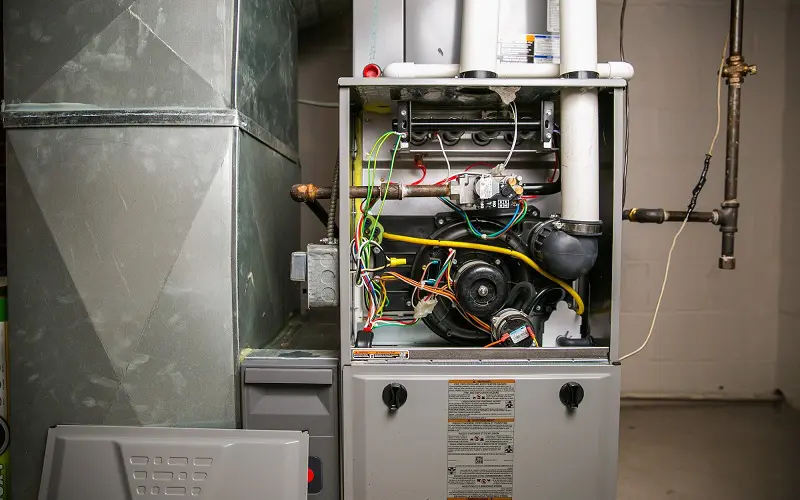
Image Source: Gearyfurnacerepair.com
When it comes to furnaces, there are four main types. In order of efficiency (from greatest to least), they are natural gas, oil, electric, and propane.
In order of costliness (from greatest to least), they are natural gas, oil, propane, and electric.
1. Natural Gas Furnaces
Natural gas furnaces run off of what it sounds like: natural gas. For natural gas furnaces to warm the air, the gas is ignited by communicating with a thermostat.
Then, the burner ignites. The high-quality air gets separated from the poor-quality waste in the combustion chamber. Then, the warm air gets released into the space. When the air cools, it’s pushed into the furnace to be reheated through the same process.
2. Oil Furnaces
With an oil furnace, the starting point is also the thermostat. When the temperature is lower than the temperature you set the thermostat at, the system is triggered.
To warm the air, it relies on an oil tank. The oil is filtered and converted into a spray, which is on the burner chamber. It then heats up.
The air that will be released into the home at the end of the process gets heated as it makes its way over the hot burner chamber. After the journey of passing over the chamber is complete, the air is released back into the space.
3. Electric Furnaces
An electric furnace follows the same generic steps that a gas and electric furnace follow: the system detects that the temperature has fallen below the temperature set on the thermostat and turns on.
An electric furnace is different in that it uses an electric motor to pump the air into and out of the furnace.
When the air gets too cold, the coiled spools of wire receive electric currents to heat the electric heater. A blower forces the air over the heating elements, through a filter, and out into the environment.
4. Propane Furnaces
Propane furnaces work by burning propane and converting it into gas. A blower, similar to the one used in an electric furnace, blows air across a heat exchanger after the heat exchanger reaches a defined temperature.
The newly-warmed air gets pushed out into space.
Parts of the Furnace
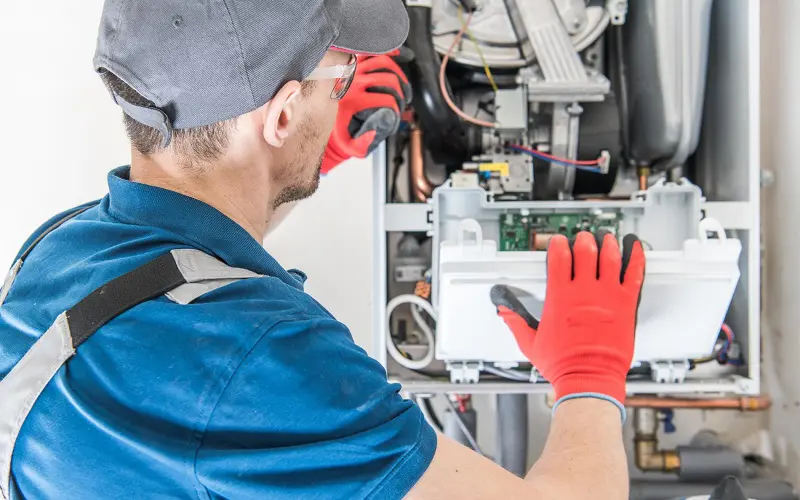
Image Source: Pacific Northern Gas Ltd. / Twitter
Homeowners and repair professionals refer to the furnace as one entity, but there are many parts within the overall appliance.
In addition, they all have specific jobs, so a glitch in one section can negatively impact the entire unit.
Return Register
The return register pulls air from your home to bring it back through the HVAC system. Vents are typically in the ceiling since hot air rises. So as soon as you turn on the heat, you’ll hear the return register kick on to pull the existing air from the house and start to warm it up.
Return Duct
The return duct funnels the air pulled from your home through the furnace.
Air Filter
Air filters are crucial because they remove harmful particles from the air as it flows through the furnace.
Blower Chamber
The blower chamber contains the blower itself and motor to stabilize them. The blower pulls air from the return and blows it into the furnace, pushing it through to the return ducts.
The motor is what keeps the air moving through this portion of the furnace, keeping things in constant motion.
Burners
Furnace burners connect to your gas line, pulling gas into the combustion chamber so the pilot light can create flames. There’s a cover over the burner that also protects the flame sensor and pilot light.
Flame Sensor
The flame sensor regulates the heat created in the combustion chamber. If the burners don’t generate enough heat, the flame sensor alerts the furnace and shuts down the system to prevent carbon monoxide leaks.
Pilot Light
The pilot light always runs, even if you’re not using the furnace. These lights, whether they’re flame or electric, show you that your furnace works and can quickly heat your home if necessary.
However, sometimes they go out, and you need to manually reignite them so they’re ready to spark the burners.
Combustion Chamber
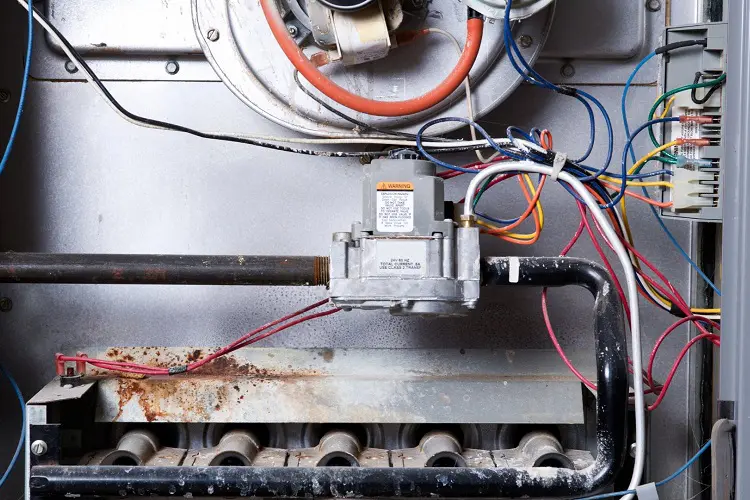
Image Source: BobsHeatAC Twitter
The combustion chamber contains the burners, flame sensor, flames, and pilot light. The combustion and blower chambers are separate to keep the flames away from the air.
Heat Exchanger
The heat exchanger makes warm air from the gasses created in the combustion chamber. Those heated gasses warm the heat exchanger’s walls as the air flows through, which then goes through the filter and into your home.
Supply Duct
The supply duct directs the supply of treated, filtered air into your home. It’s the opposite of the return duct.
Supply Register
The supply register is the opposite of the return register. You have vents near your baseboards that send warm air into your home.
How Does a Furnace Work?
All the parts listed above work together to pull cool, untreated air from your home and into the furnace.
The air flows through the appliance and gets warm before it’s pushed through the air filters.
Your supply registers send warm, filtered air into your home so everyone stays comfortable and can breathe clean air.
How Long Does a Furnace Last?
A furnace is a major investment, so you should be happy to know it will last at least 15 to 20 years. If you follow regular maintenance and keep your furnace in good condition, it can last even longer.
Regularly changing the air filter is one key to ensuring your furnace lasts as long as possible. A clogged filter makes unhealthy air for your family to breathe but also forces the furnace to work even harder to push out enough heat.
Another way to expand your furnace’s life is to insulate your house properly. The more insulation you have in your walls and attic, the more heat will stay inside your house with each furnace cycle.
Replacing Your Furnace
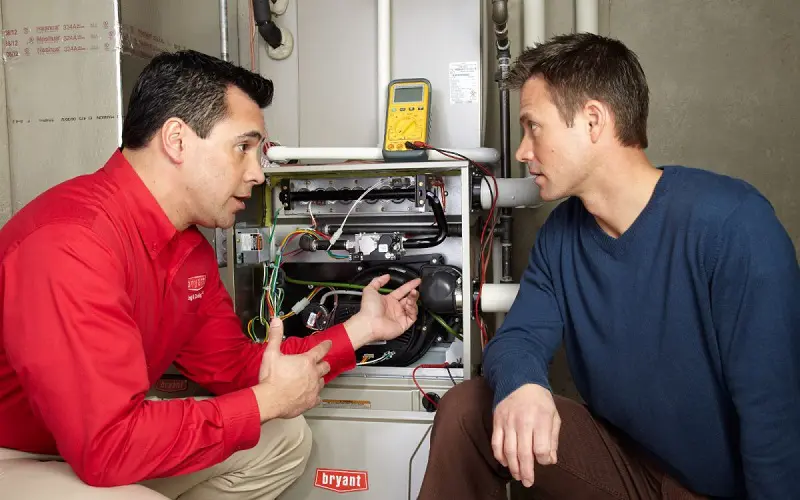
Image Source: HAVCforlife.com
When your furnace nears 15 years of age, you should start researching replacements. Since your machine is older, there are most likely more energy-efficient options available.
In addition, proper installation of an eco-friendly model will lower your utility costs and ensure the furnace heats your entire home.
You need to look for a furnace that isn’t too large for your house. These models can heat your home quickly since they’re made for a larger space, so the heating cycle will be short and abrupt, causing wear and tear on your appliance.
Similarly, a furnace that’s too small won’t heat your house efficiently. It will struggle to produce enough warm air to fill your home, constantly running to keep up. This process damages the furnace in time.
Since furnaces can last longer than 15 years, you can watch for certain signs to determine if you need to replace your furnace. Watch for these factors:
- Expensive utility bills despite low thermostat settings
- Inability to heat the house to the thermostat setting
- Constant repairs and services needed
- Blowing cold air instead of hot
- Random or loud noises coming from the furnace
If you notice any of these issues, contact your HVAC company. They will come and inspect your furnace, advise you about the next steps, and recommend reliable furnace options for replacements.
Maintaining Your Furnace
If you wait for your furnace to break down before calling for repairs, you’re going to have some cold nights and a very expensive bill. Routine maintenance can prevent a breakdown and keep your furnace in good shape so it lasts for decades.
You can do minor maintenance yourself, such as changing the air filter and vacuuming the return and supply registers. However, dust accumulates in those vents, dirtying the clean air and forcing your furnace to work even harder to push heat into your home.
You should call your HVAC company to clean your furnace every fall before the winter chill requires you to turn on the furnace. This annual inspection will catch potential issues before they cause severe damage.
The HVAC professionals will shut down the system for a deep cleaning, which includes clearing the combustion chamber, checking the ducts, replacing the air filter, and adjusting the burner. They also clean the supply register to ensure the air leaving the furnace stays clean.
Things to Consider
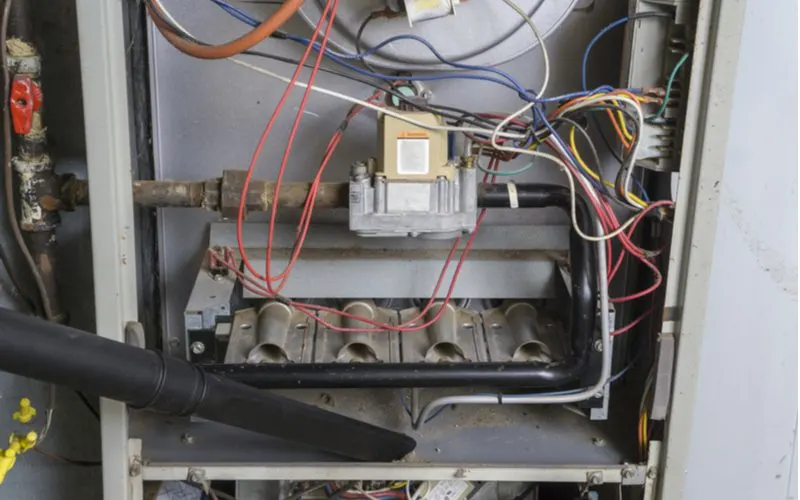
Indy Edge/Shutterstock
Whether you are looking for a furnace to use in your space or you are simply interested in learning about furnaces, there are a few items to keep in mind:
- Furnaces vary in size. Choosing the right-sized furnace isn’t as easy as it sounds – the size depends on how spacious the area is, how tall the ceilings are, and additional minute details.
- The location of the space will affect the size and type of furnace you should get.
- The outdoor climate also affects the type and sizing of a furnace.
- How much it will cost you to repair the furnace in the future.
- The problems that may surface from using a furnace.
Of course, there are many more questions surrounding furnaces than the basic questions we covered above. We’ve listed some commonly asked questions along with their answers.
The Bottom Line
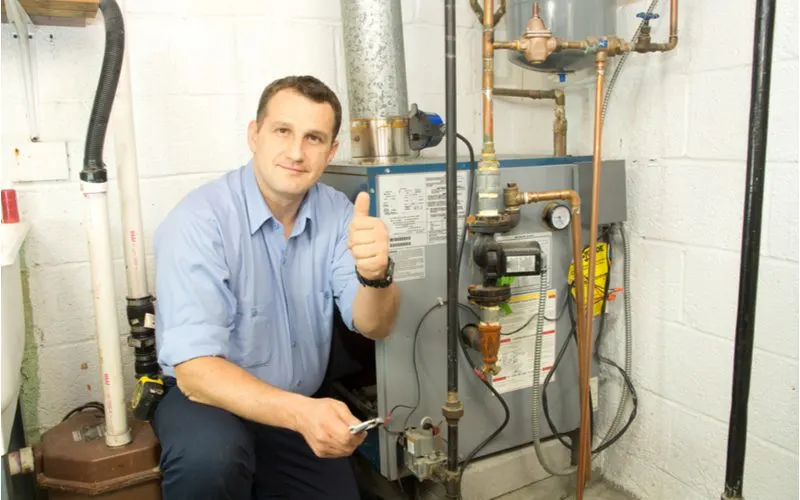
Globalphotogroup/Shutterstock
To understand what is a furnace, let’s recap what it isn’t: it isn’t the same thing as a heater. Also, it doesn’t substitute an air conditioning unit.
In a nutshell, a furnace is a system that takes in the air that is cooler than the temperature set on the thermostat, warms it, and pushes it back out after being thoroughly filtered.
They system works hard to keep you comfortable, even when the temperatures are frigid outside.

